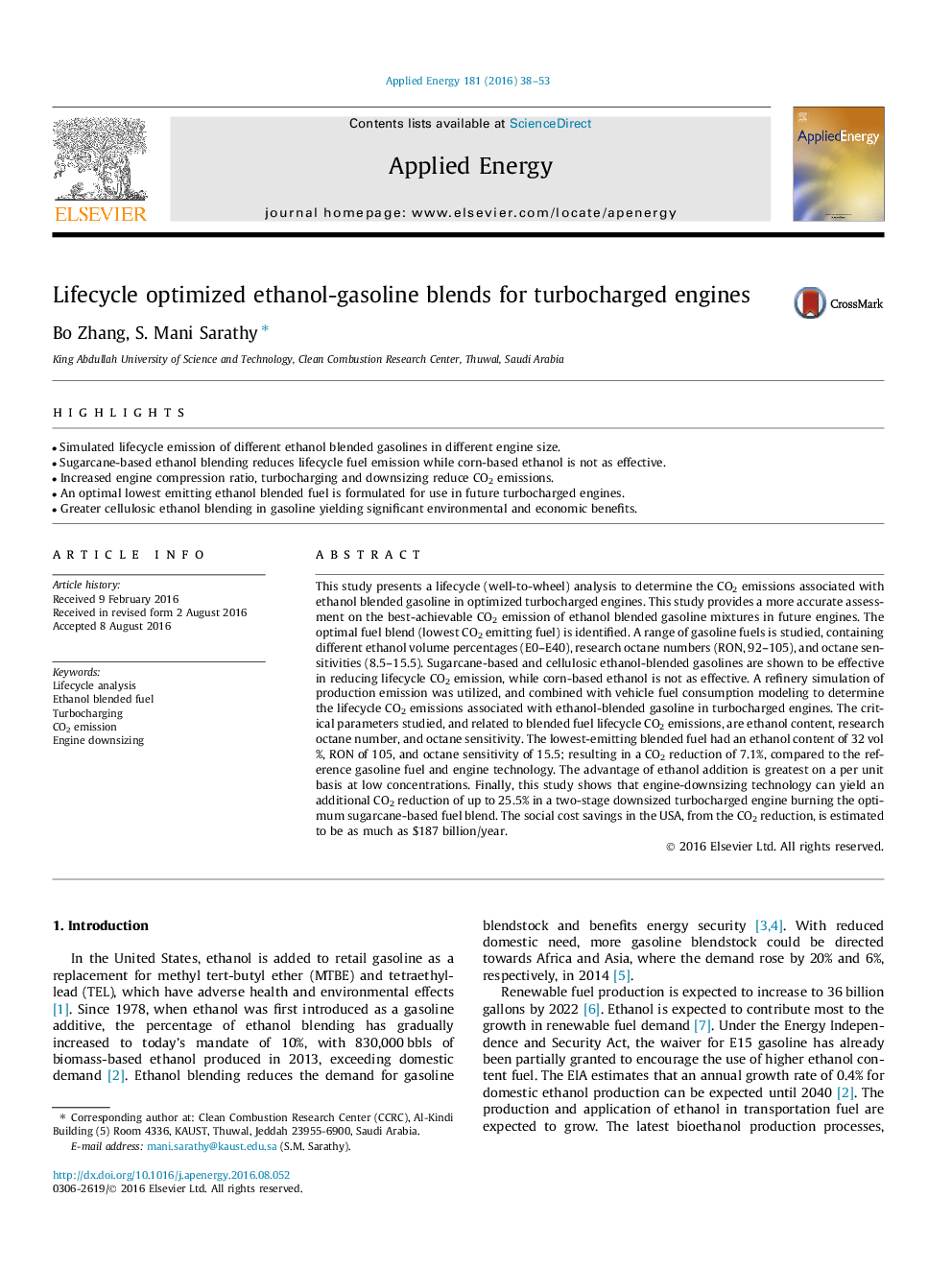| کد مقاله | کد نشریه | سال انتشار | مقاله انگلیسی | نسخه تمام متن |
|---|---|---|---|---|
| 4917138 | 1428107 | 2016 | 16 صفحه PDF | دانلود رایگان |
عنوان انگلیسی مقاله ISI
Lifecycle optimized ethanol-gasoline blends for turbocharged engines
ترجمه فارسی عنوان
اتانول-بنزین بهینه شده برای موتورهای توربوشارژر بهینه شده است
دانلود مقاله + سفارش ترجمه
دانلود مقاله ISI انگلیسی
رایگان برای ایرانیان
کلمات کلیدی
موضوعات مرتبط
مهندسی و علوم پایه
مهندسی انرژی
مهندسی انرژی و فناوری های برق
چکیده انگلیسی
This study presents a lifecycle (well-to-wheel) analysis to determine the CO2 emissions associated with ethanol blended gasoline in optimized turbocharged engines. This study provides a more accurate assessment on the best-achievable CO2 emission of ethanol blended gasoline mixtures in future engines. The optimal fuel blend (lowest CO2 emitting fuel) is identified. A range of gasoline fuels is studied, containing different ethanol volume percentages (E0-E40), research octane numbers (RON, 92-105), and octane sensitivities (8.5-15.5). Sugarcane-based and cellulosic ethanol-blended gasolines are shown to be effective in reducing lifecycle CO2 emission, while corn-based ethanol is not as effective. A refinery simulation of production emission was utilized, and combined with vehicle fuel consumption modeling to determine the lifecycle CO2 emissions associated with ethanol-blended gasoline in turbocharged engines. The critical parameters studied, and related to blended fuel lifecycle CO2 emissions, are ethanol content, research octane number, and octane sensitivity. The lowest-emitting blended fuel had an ethanol content of 32Â vol%, RON of 105, and octane sensitivity of 15.5; resulting in a CO2 reduction of 7.1%, compared to the reference gasoline fuel and engine technology. The advantage of ethanol addition is greatest on a per unit basis at low concentrations. Finally, this study shows that engine-downsizing technology can yield an additional CO2 reduction of up to 25.5% in a two-stage downsized turbocharged engine burning the optimum sugarcane-based fuel blend. The social cost savings in the USA, from the CO2 reduction, is estimated to be as much as $187Â billion/year.
ناشر
Database: Elsevier - ScienceDirect (ساینس دایرکت)
Journal: Applied Energy - Volume 181, 1 November 2016, Pages 38-53
Journal: Applied Energy - Volume 181, 1 November 2016, Pages 38-53
نویسندگان
Bo Zhang, S. Mani Sarathy,
